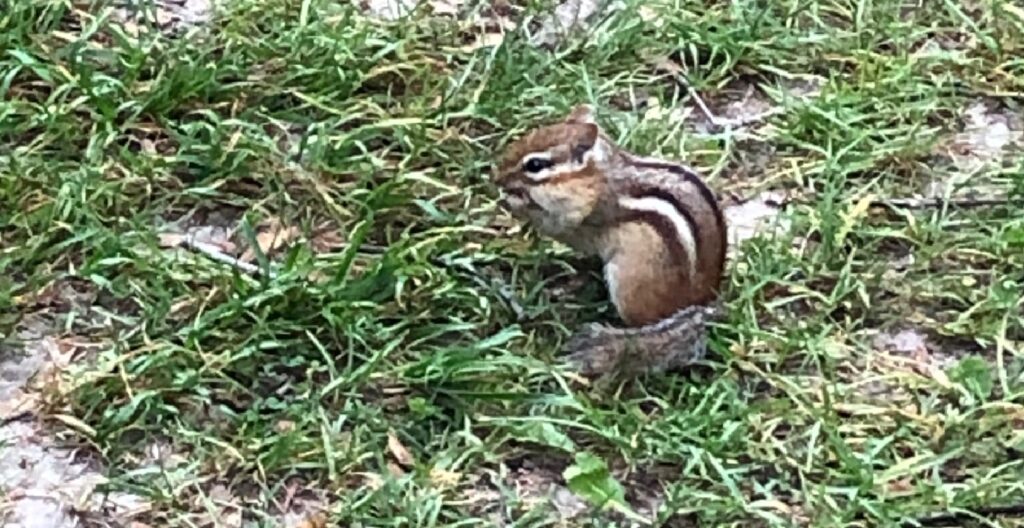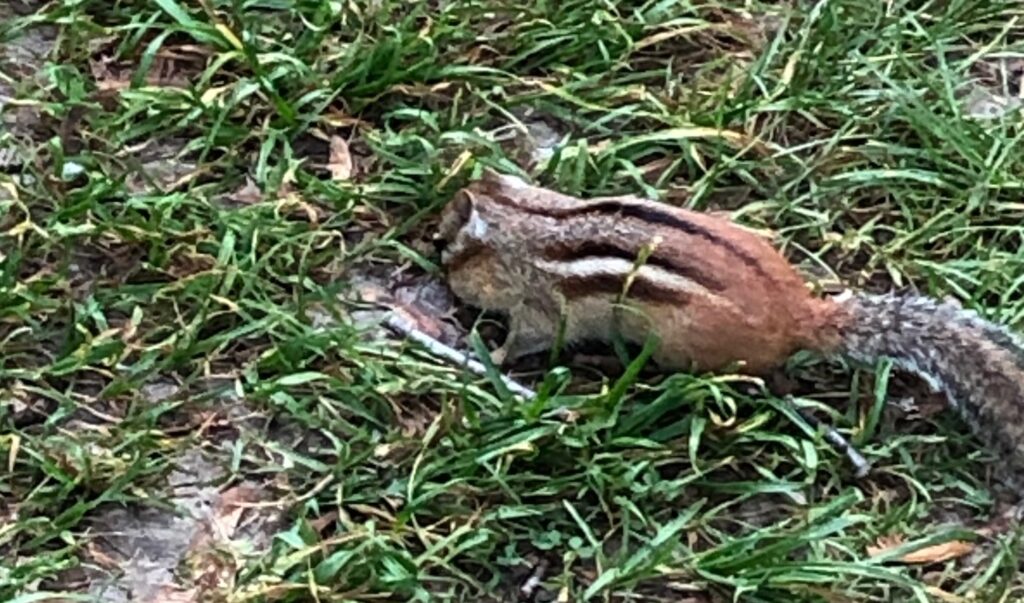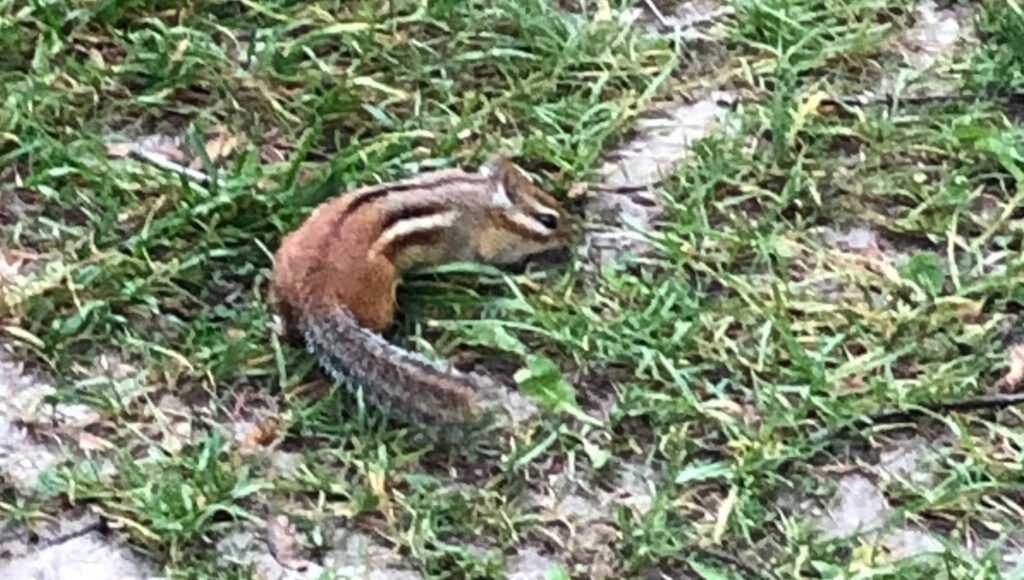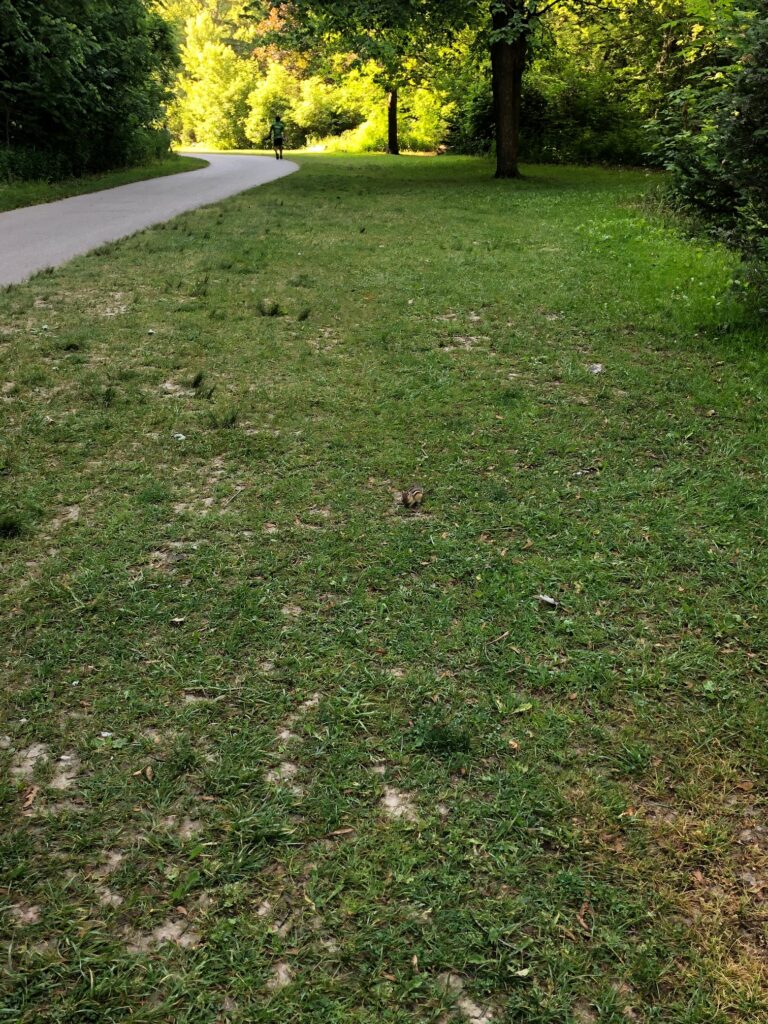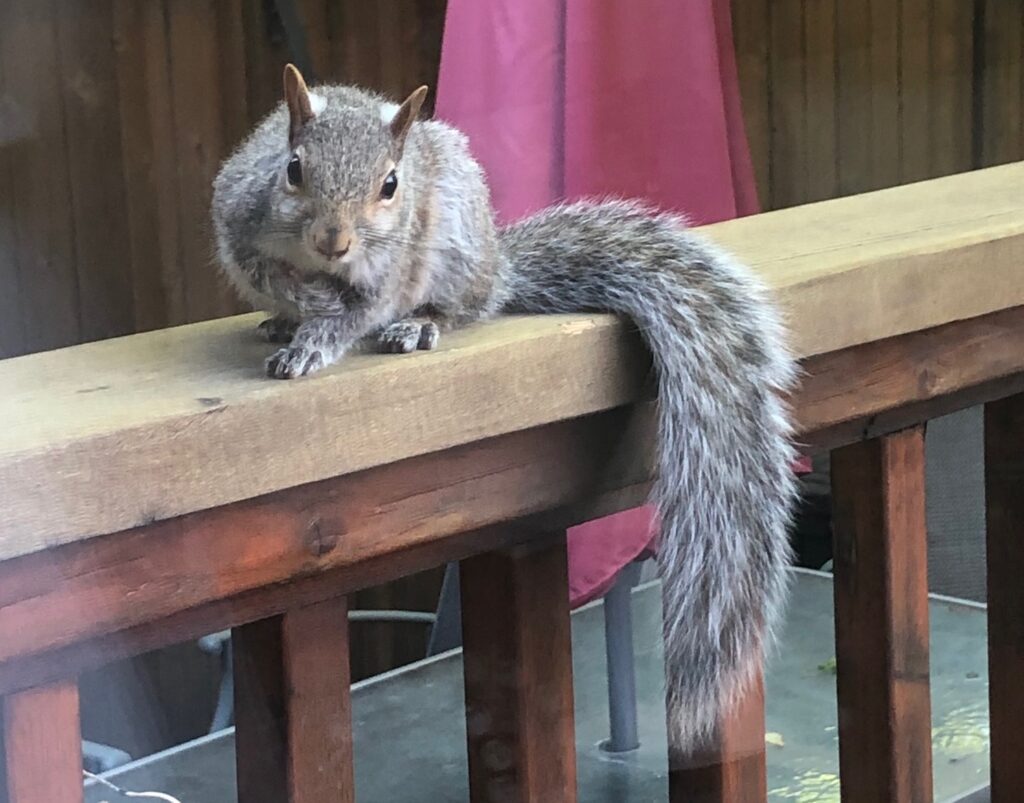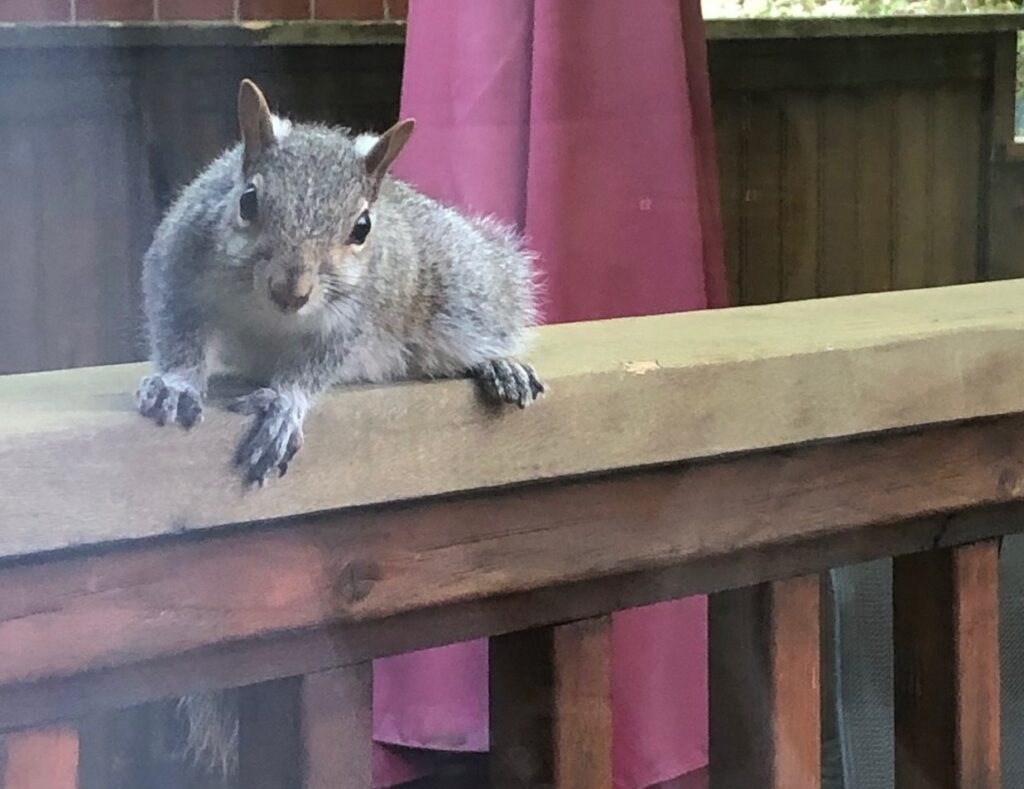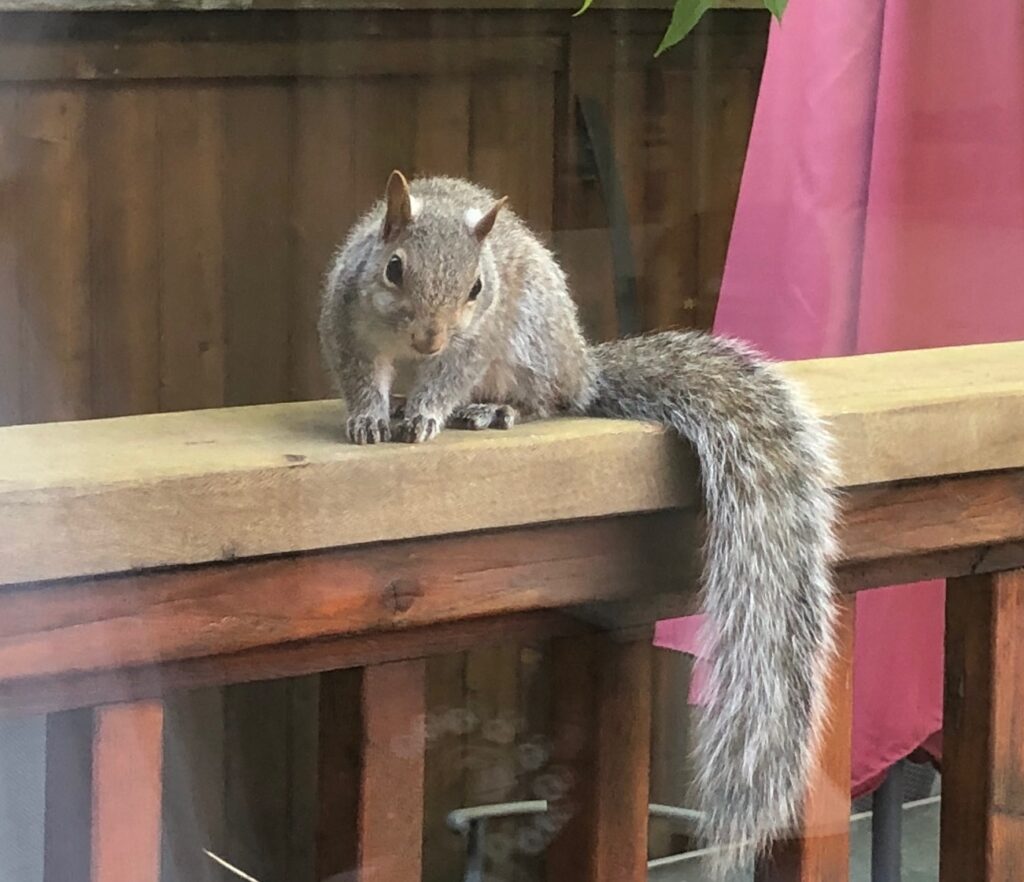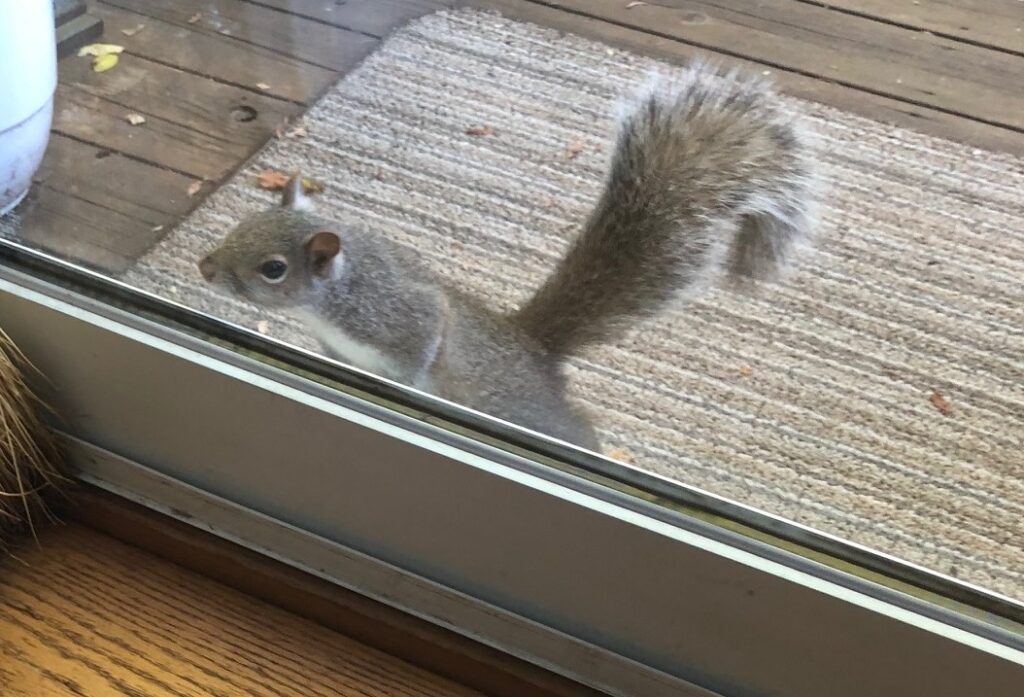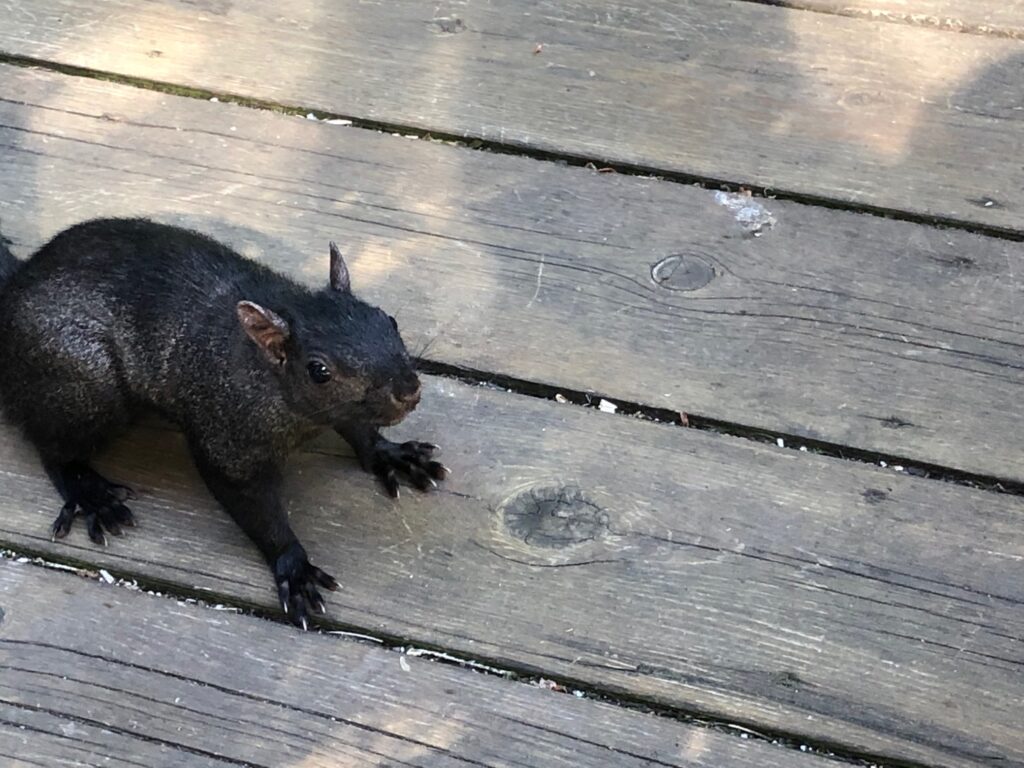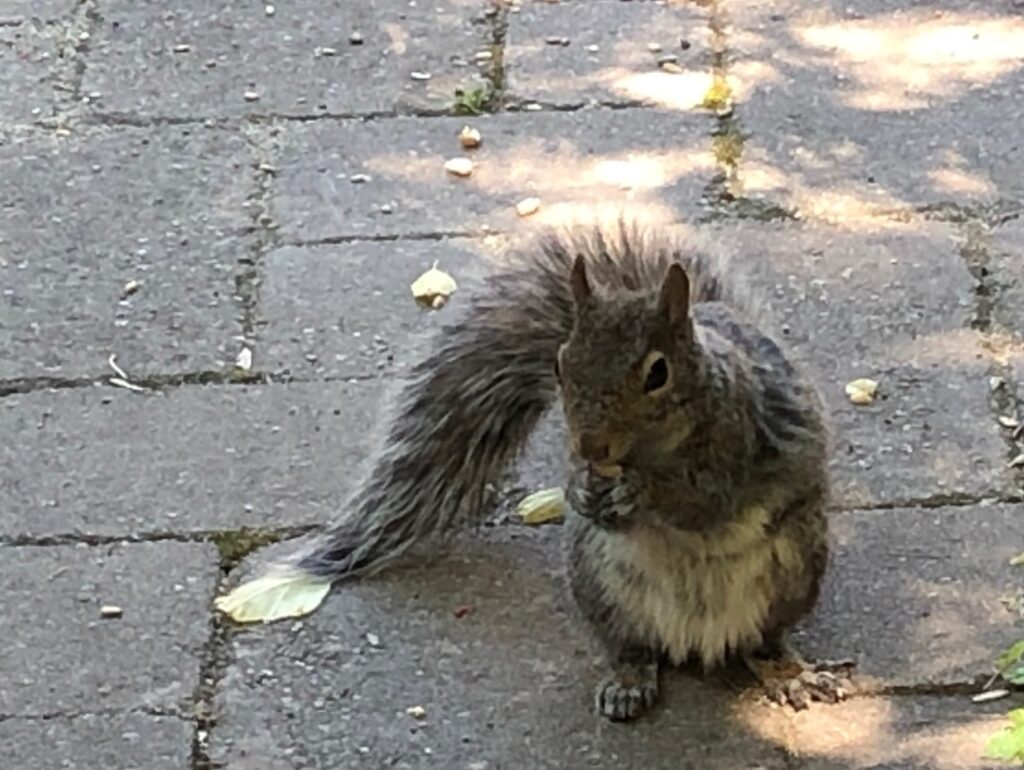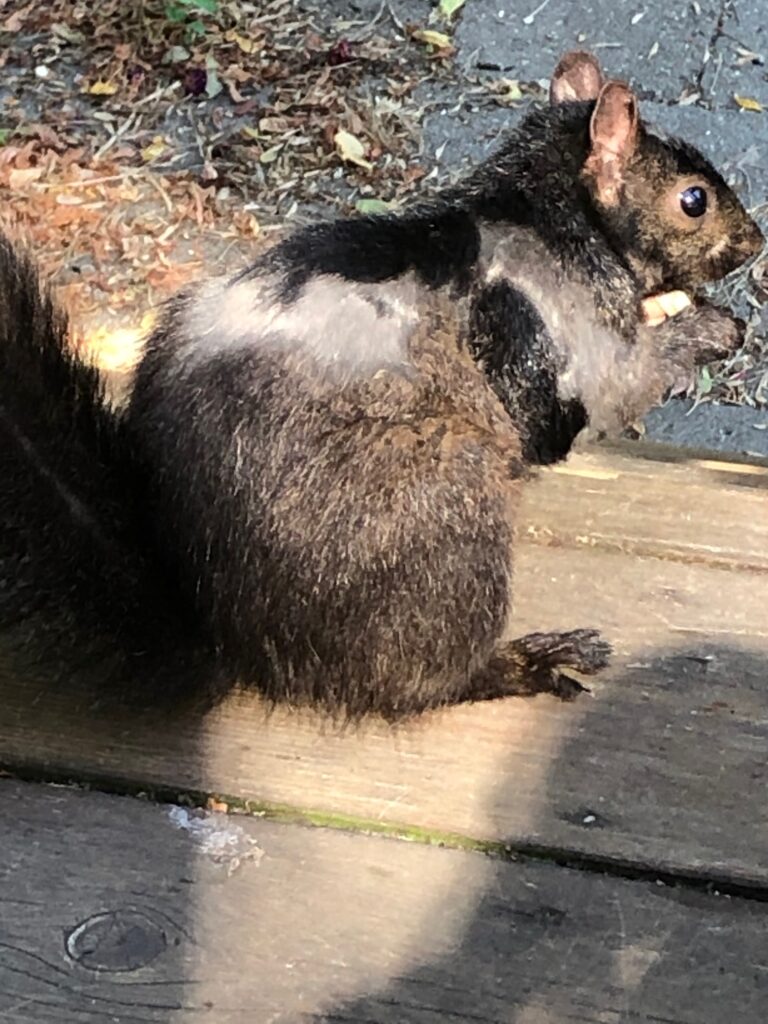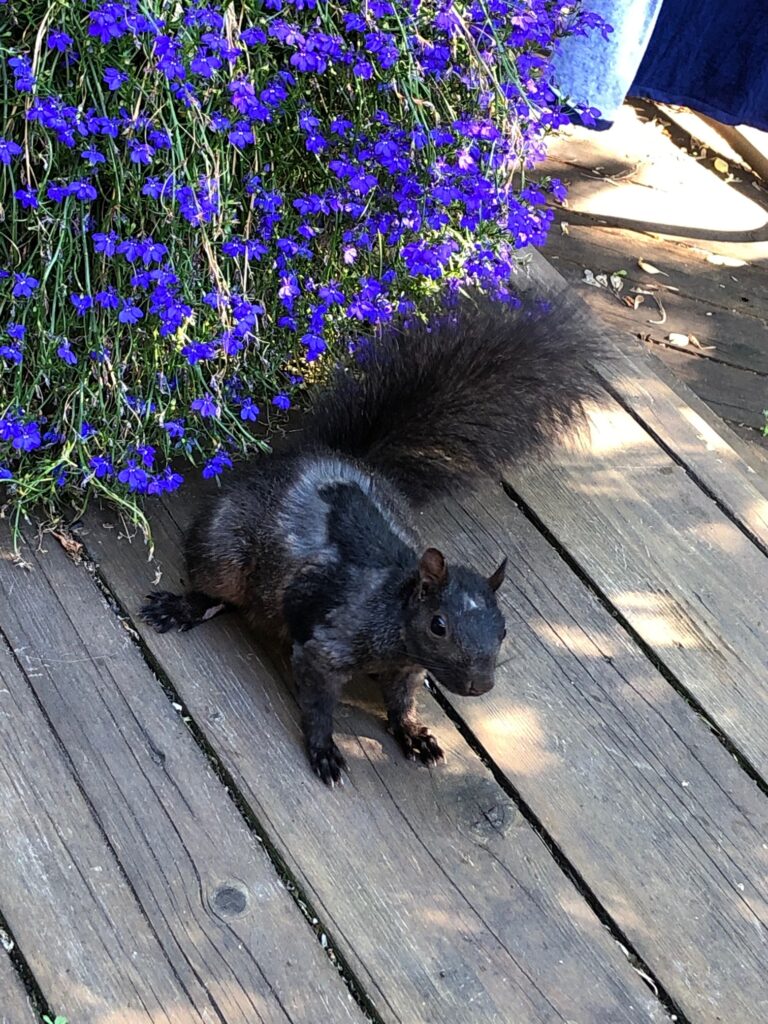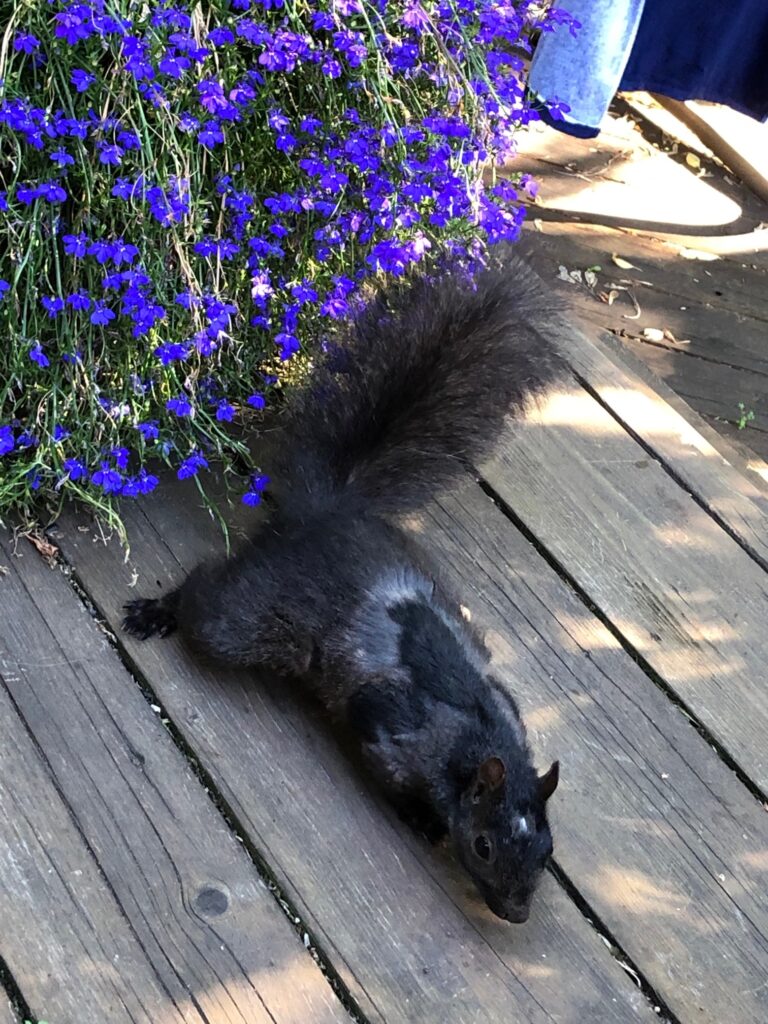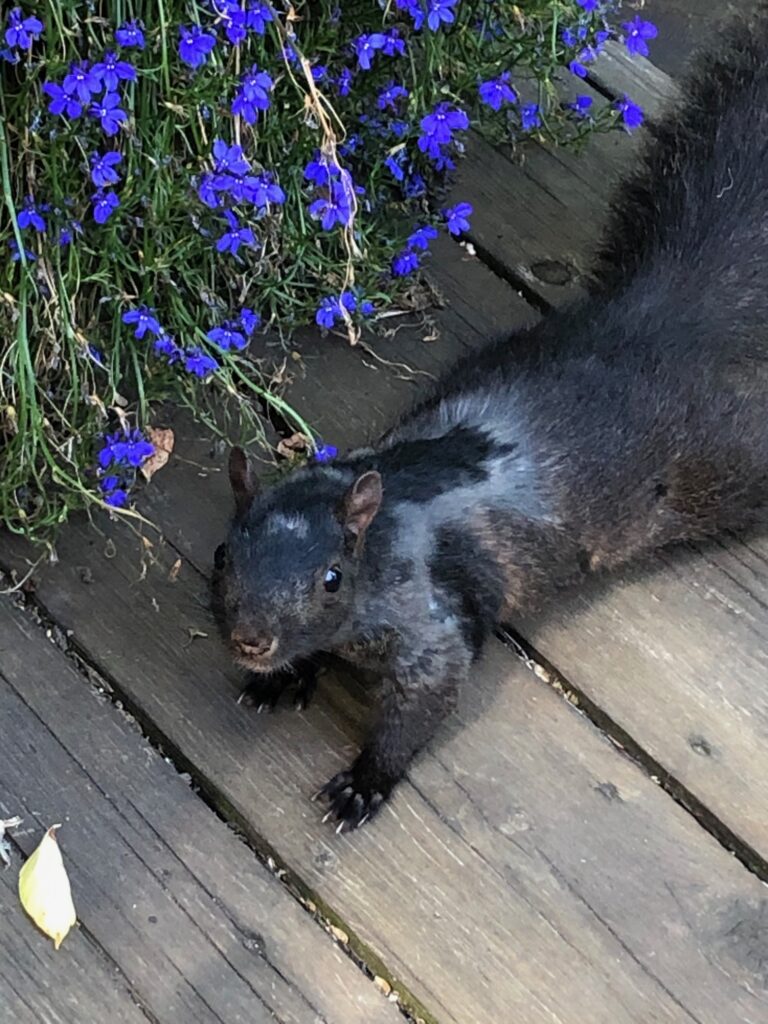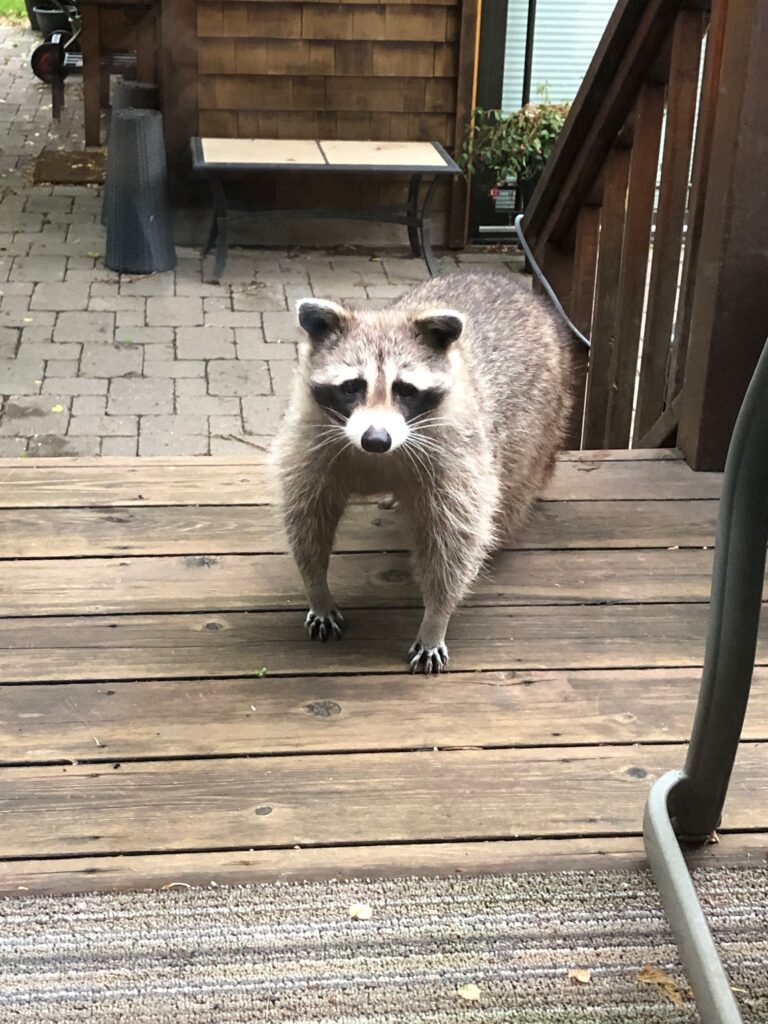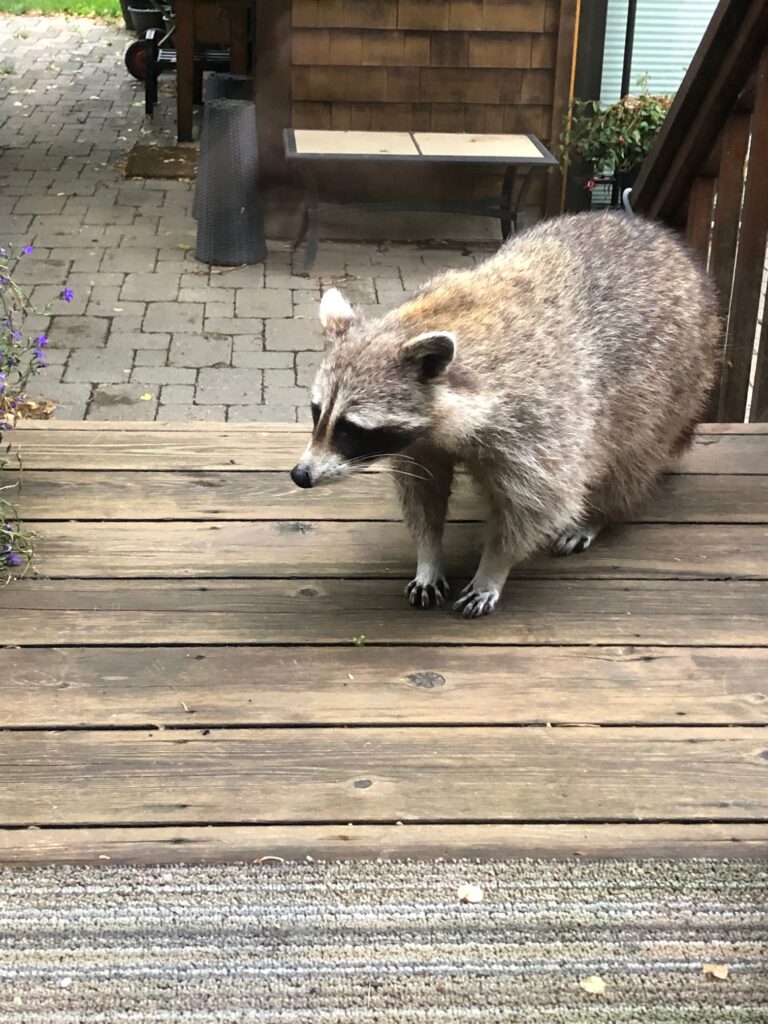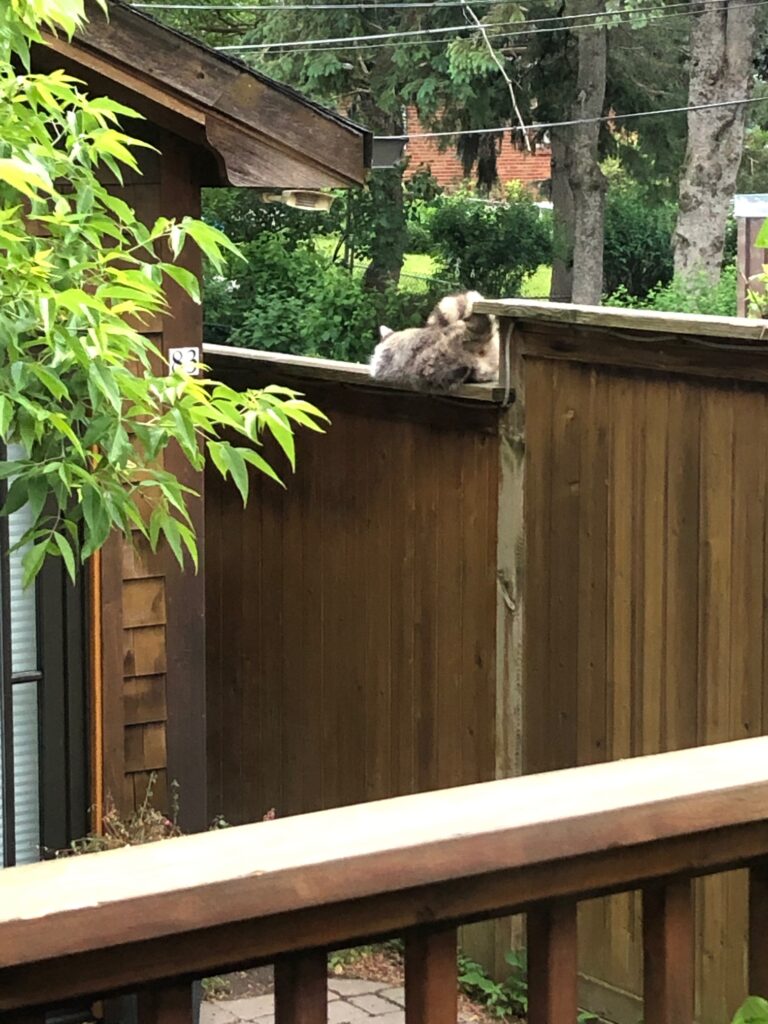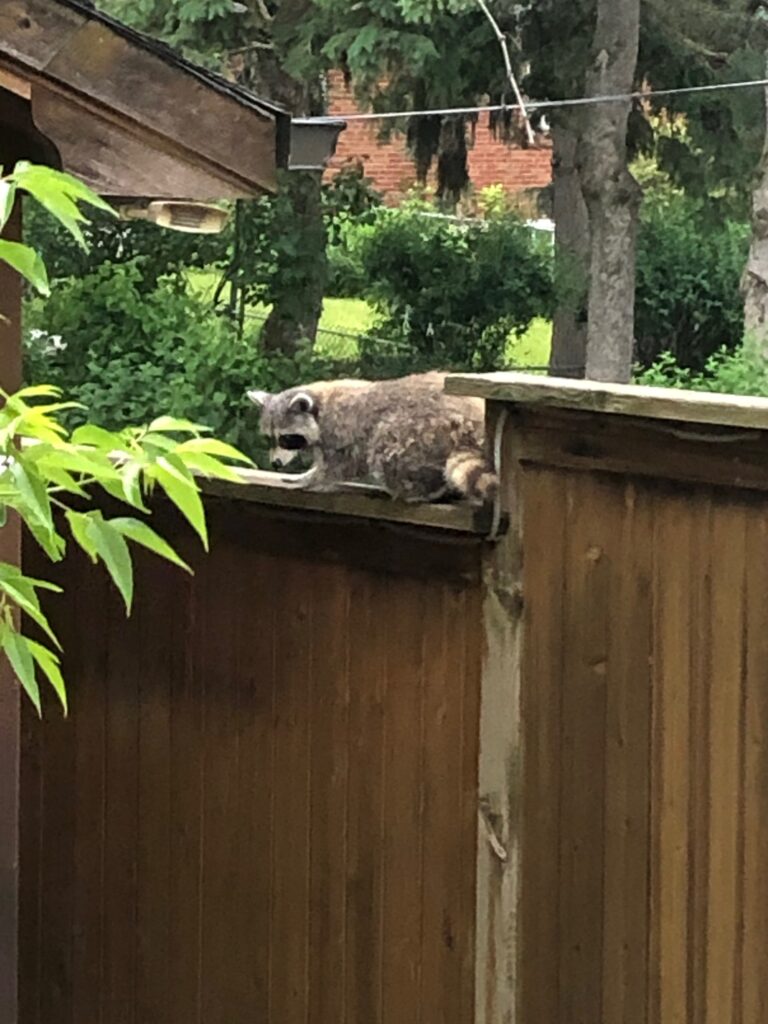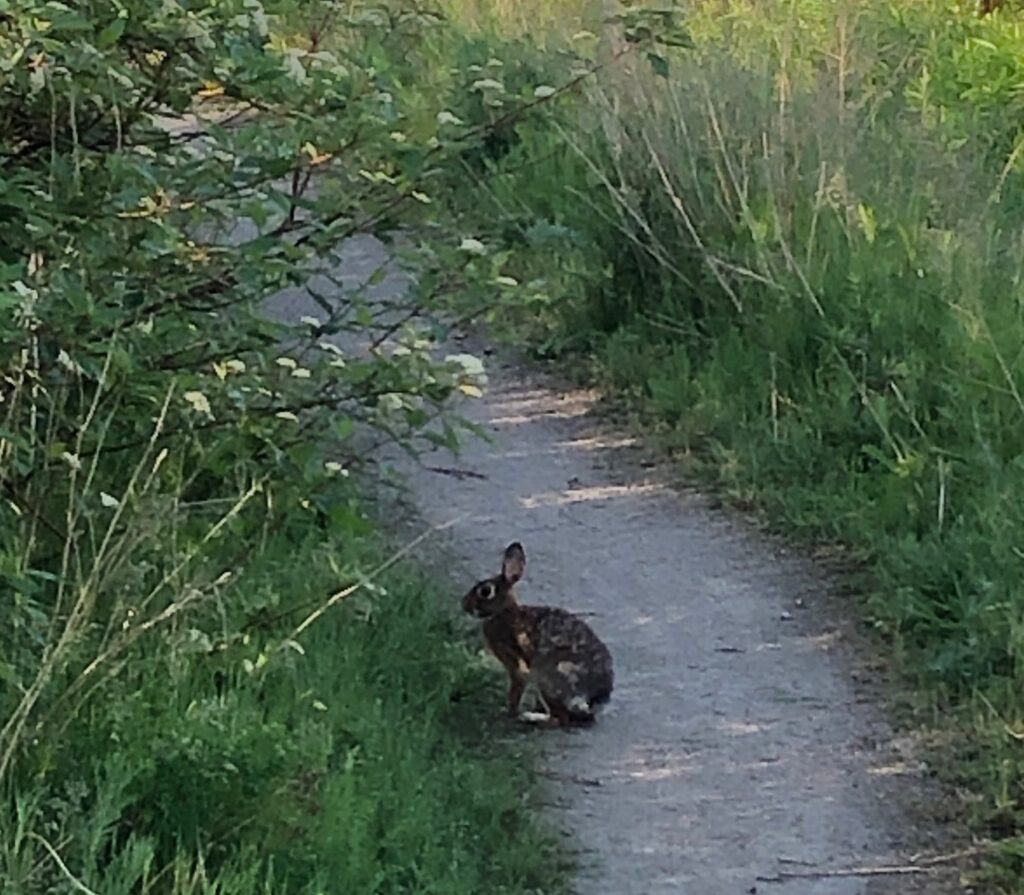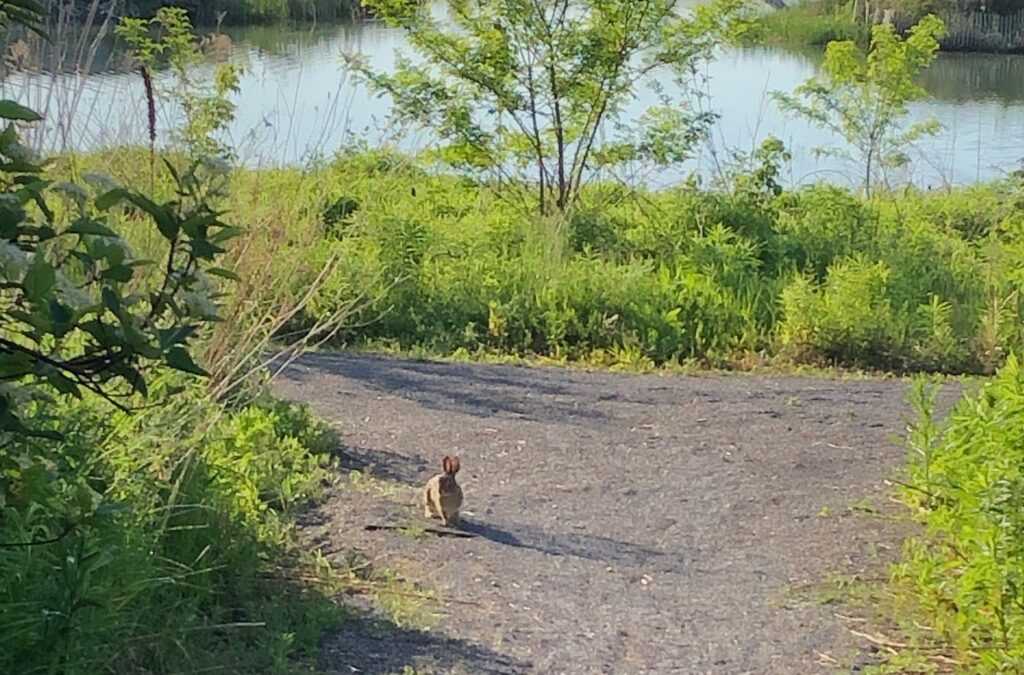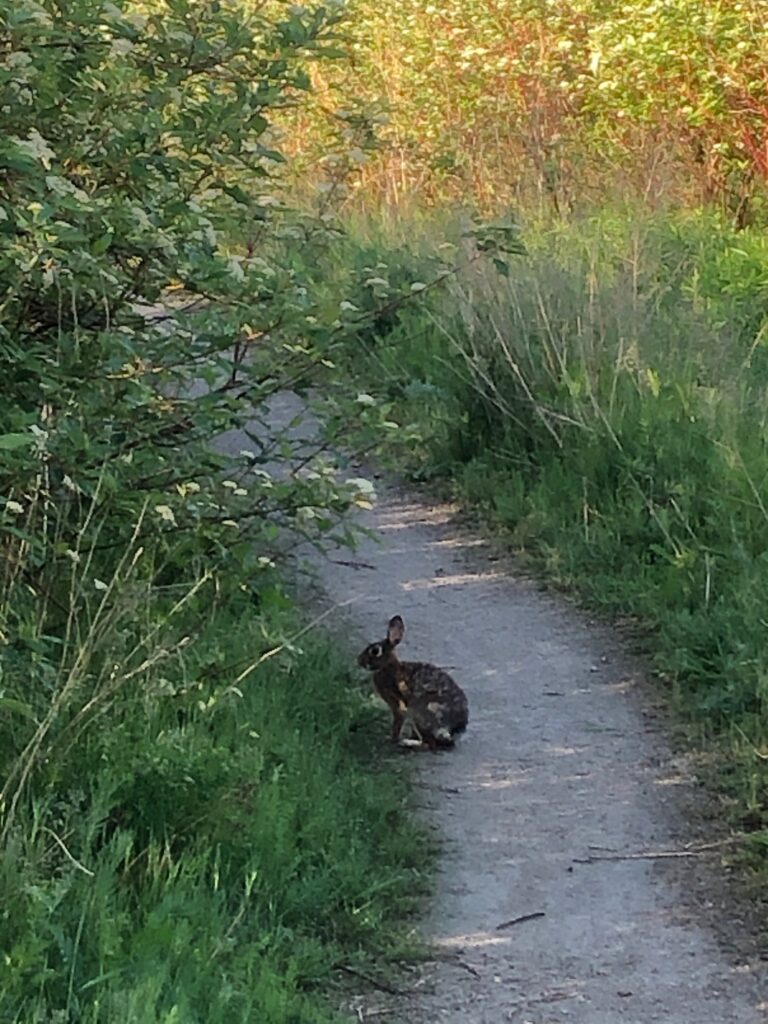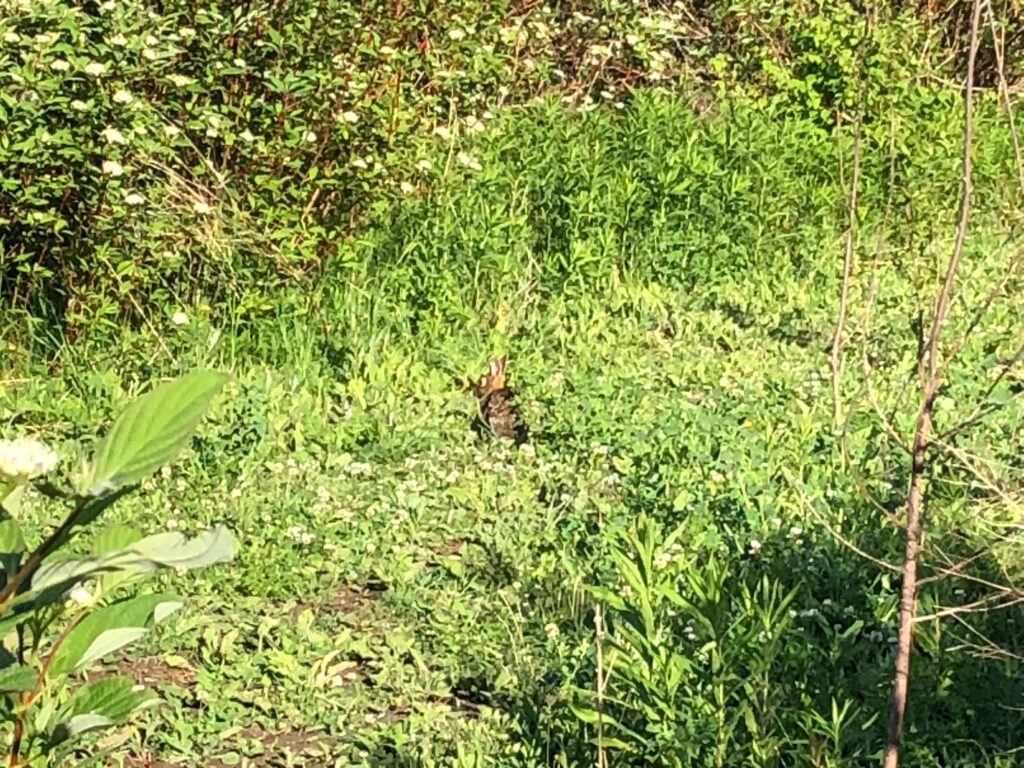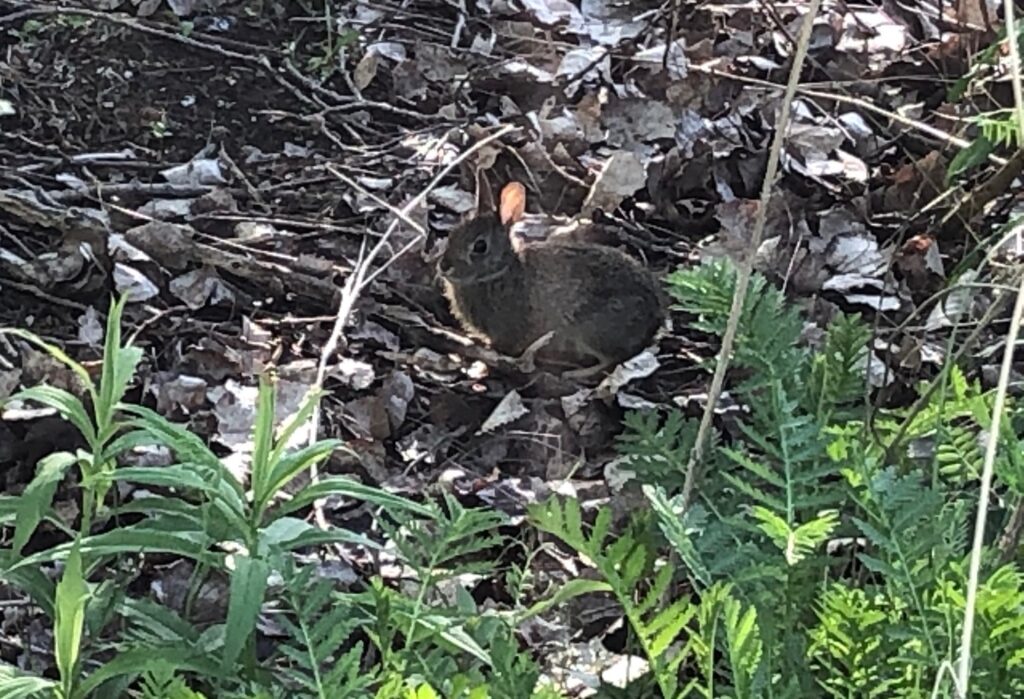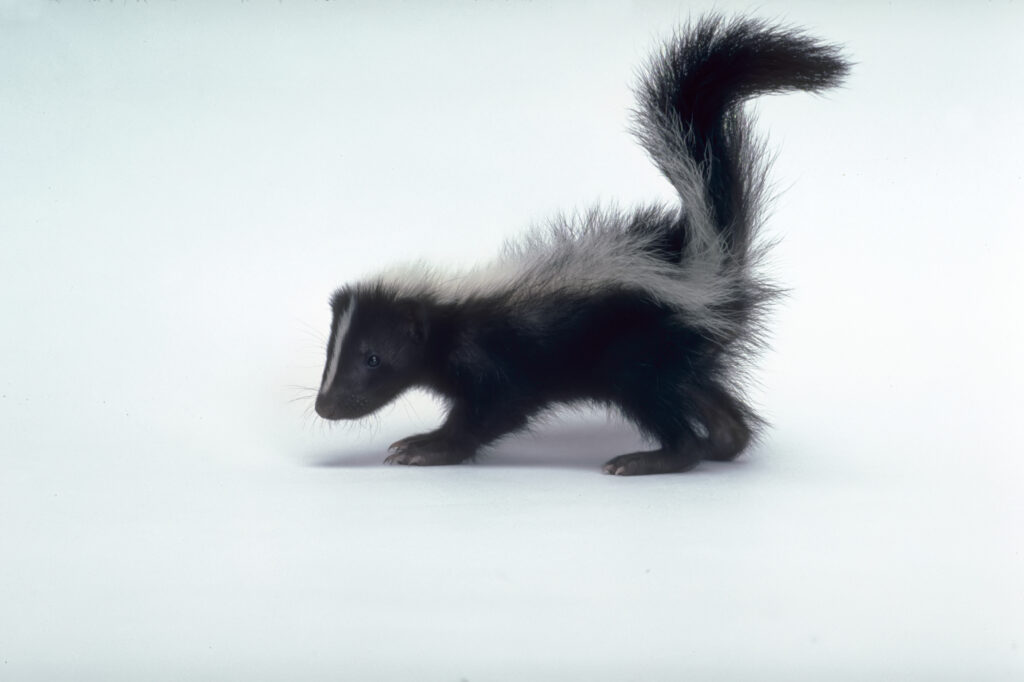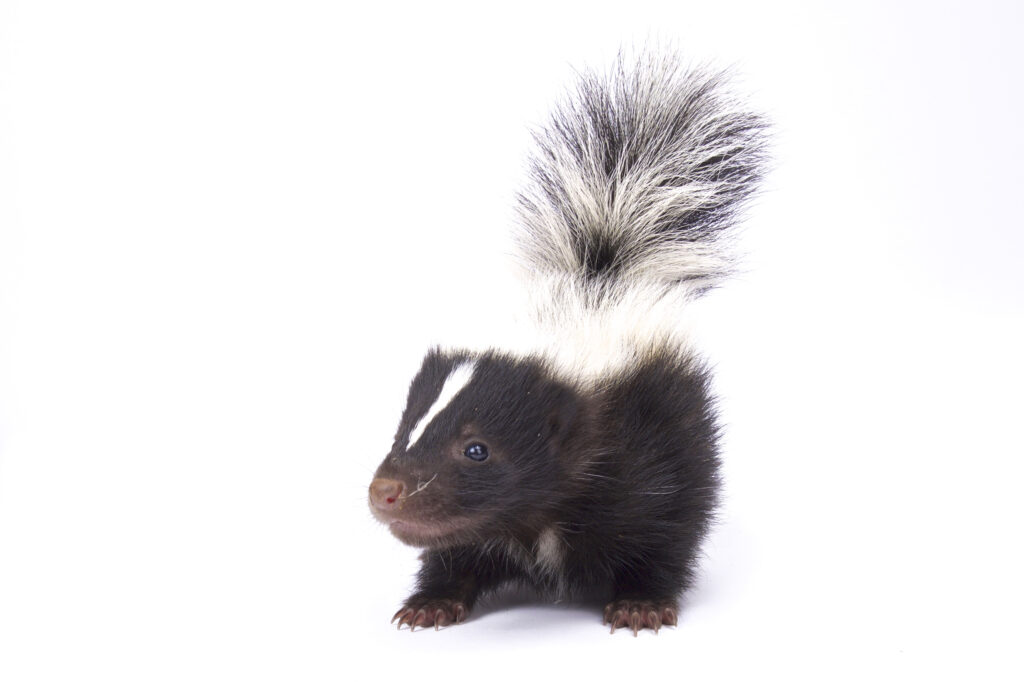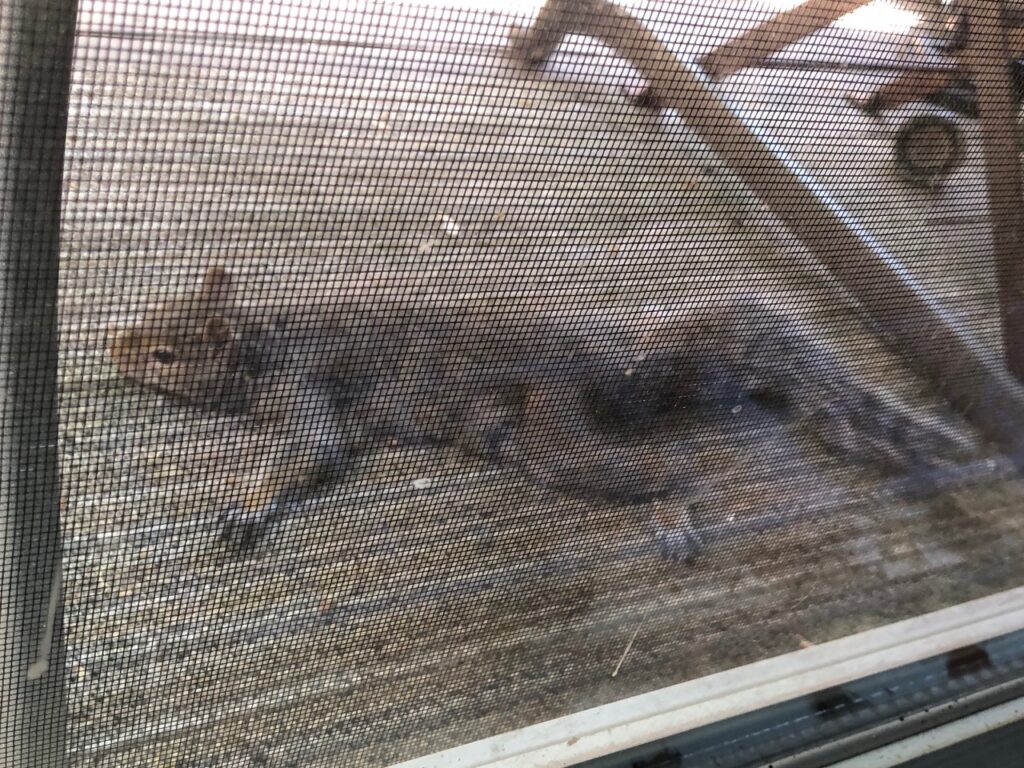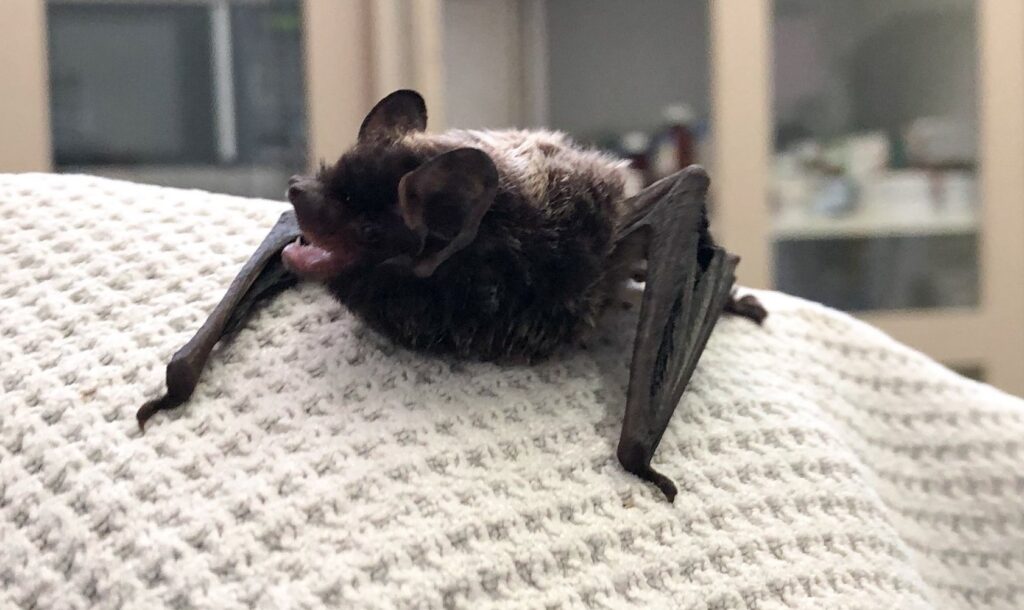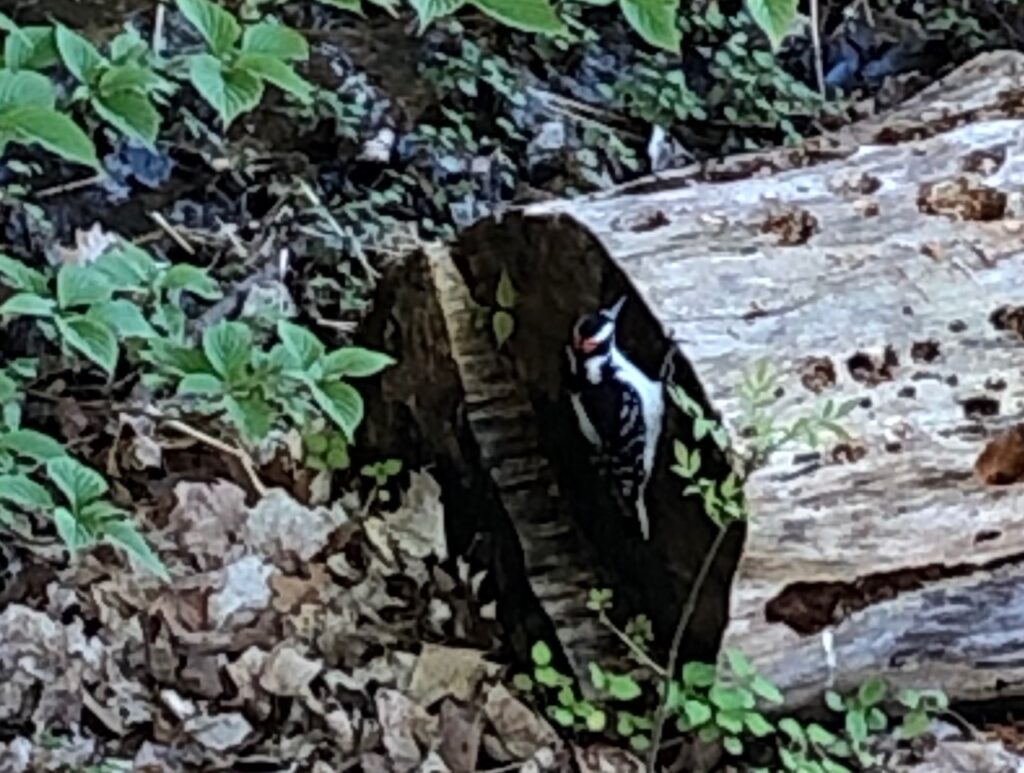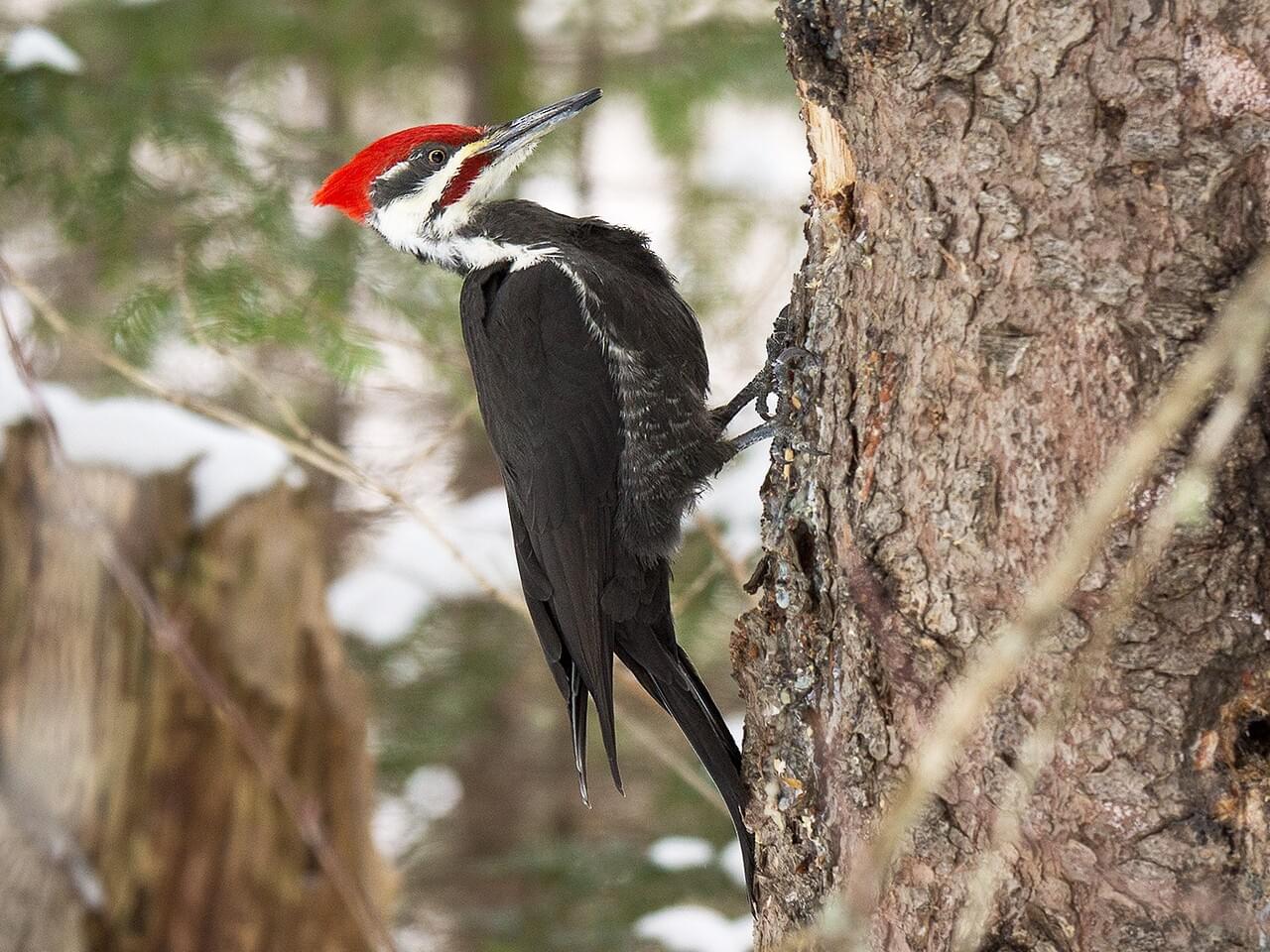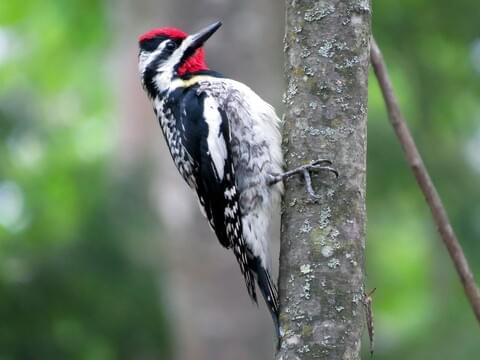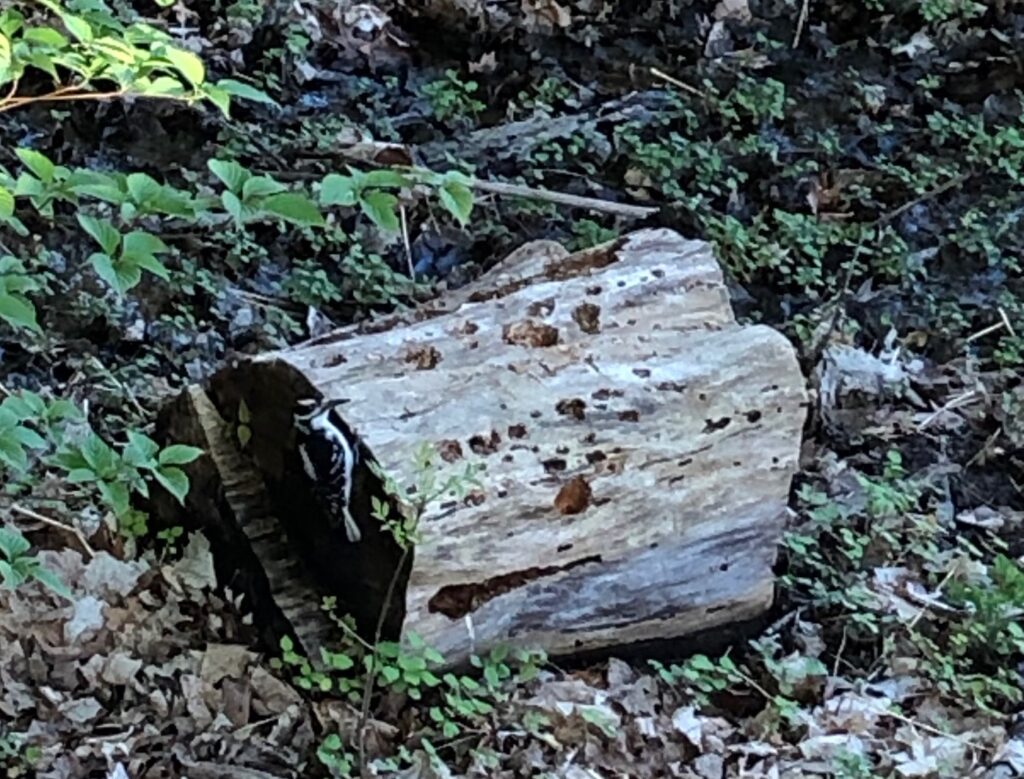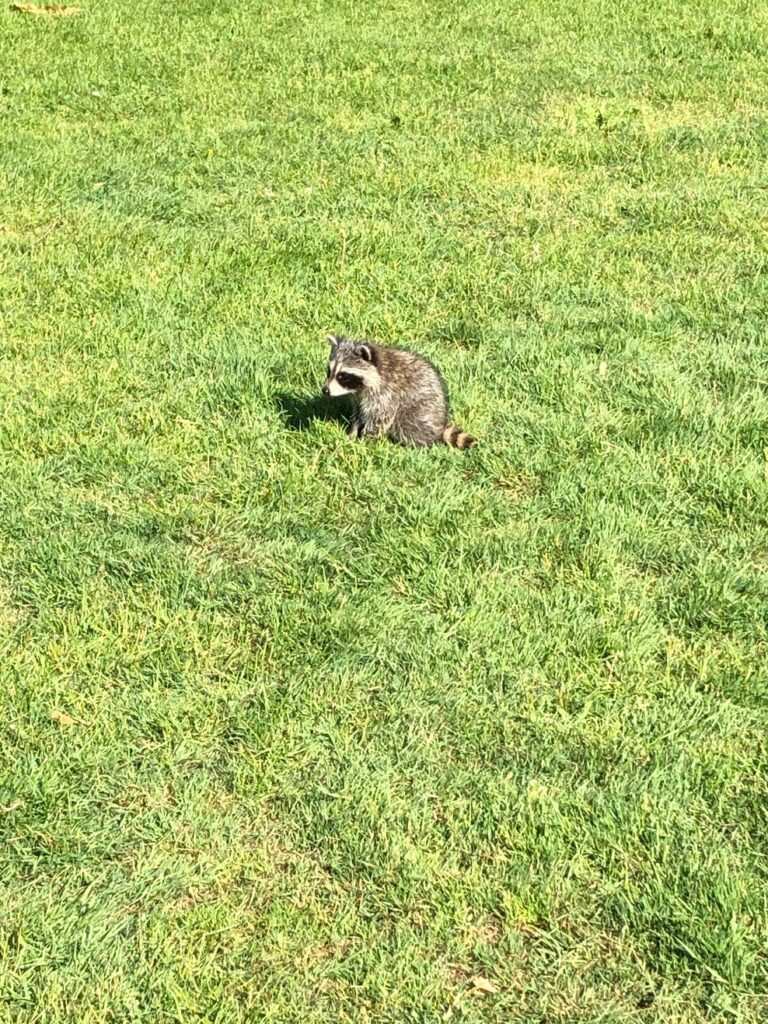
This little cutie was the joyful and worrisome adventure of the morning.
Baby raccoon was asleep in the middle of a busy path, in the middle of a busy park. Claire, a woman on her morning run, found baby and moved her to a safer spot on a side path in the shade. That’s where I came across them.
I met Claire and this sweet baby for the first time at that moment. We discovered that Claire and I are both rabies vaccinated, and comfortable though cautious with the young raccoon. Claire is a veterinarian with more than a decade of experience mostly with cats and dogs, and I have experience caring for baby raccoons once they are accepted into a rehab/rescue facility. But neither of us felt sure about the best thing for baby, here in the park.
Claire had called 311. I called the Toronto Wildlife Centre. I knew that the TWC is currently full – over capacity with so many baby raccoons – and not accepting more. But I called to get advice about the best thing to do for baby.
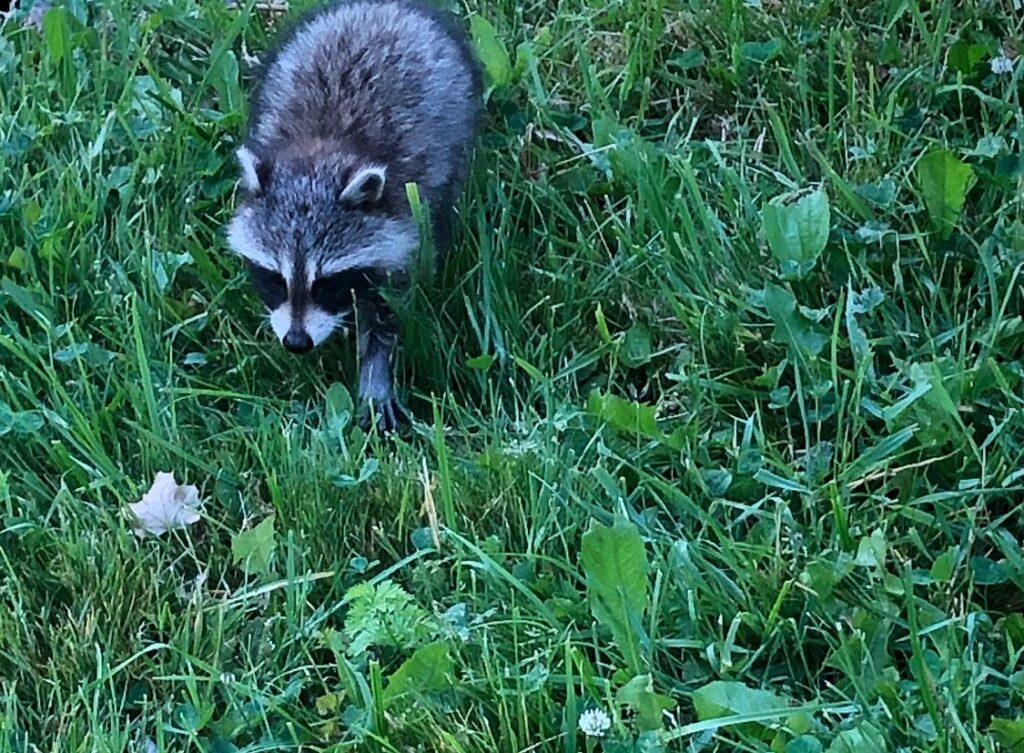
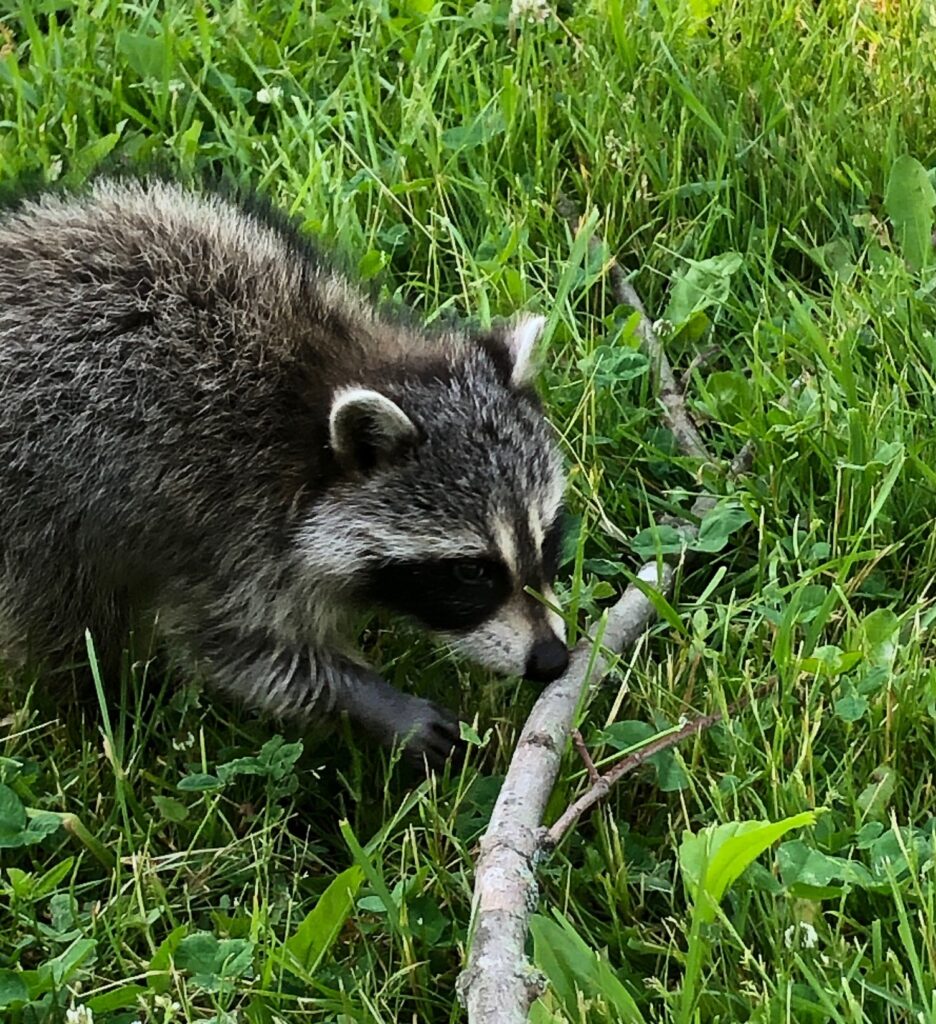
Baby was way too fearless around people. Possibly habituated to people, possibly a starving orphan looking for someone to feed her. She would waddle right up to anyone. Sniff their shoes. Keep looking.
As we waited, we watched over baby to keep her safe from dogs and cyclists. We were joined by a friendly cyclist and his curious dog (ironically), who was enthralled with baby and wanted to help. We were also watched and commented to by many, many other people in the park.
Claire and I talked (physically distanced) about what would be the best thing to do for baby – take her with us or put her somewhere in the park further away from people?
Here is what Toronto Wildlife Centre advises if you ever find a baby raccoon all alone:
“Sometimes baby raccoons can fall out of a nest or get separated from their mother. If the baby isn’t injured, getting it back to its mom is the best possible option. Raccoons are excellent mothers and will come back for their babies if given a chance! Raccoon moms will also take much better care of their babies than any human possibly could.”
“Place the box with the raccoon (and a heat source) as close as possible to where the raccoon was found. If there is a tree nearby, put it at the base of the tree. Raccoons don’t always nest in trees, so next to a house or building will work too.”
“MYTH! If you touch a baby raccoon, its mother will NOT abandon it. Raccoons are excellent moms. All they want is their baby back.”
“In very busy areas, it may make more sense to bring the baby inside and keep it somewhere dark and quiet for the day. As soon as the sun starts to set and traffic dies down, get it outside right away. No matter what, make sure to leave baby raccoons out for their mother for at least one whole overnight period.”
TWC even has a great sign that people can print and place with the baby in the box, available online.
“In high traffic areas, you can put a sign on the box to let other people know that the raccoon is waiting for its mother. Here’s one you can print off: https://www.torontowildlifecentre.com/wp-content/uploads/2015/04/I-Am-Waiting-for-My-Mother-Sign.pdf “
If you are someone (like me) who might think for a moment about taking a baby raccoon home and caring for it until it can fend for itself and be released, here is good info from the TWC:
“Baby raccoons need specialized formula, species-specific housing, and medical treatment that you cannot provide at home. They also have to be raised with other baby raccoons to learn the social behaviours they need to survive in the wild. It is illegal to keep any wild animal at home without a permit for longer than 48 hours. Please contact a wildlife rehabilitator right away for help with the baby raccoon you have found.”
Ultimately Claire and I took baby back to near where she was found, and placed her in a spot deep in the bushes, away from the busiest paths – where hopefully her mama will find her.
On top of it all, it turns out that today is Claire’s birthday. What a birthday adventure!

